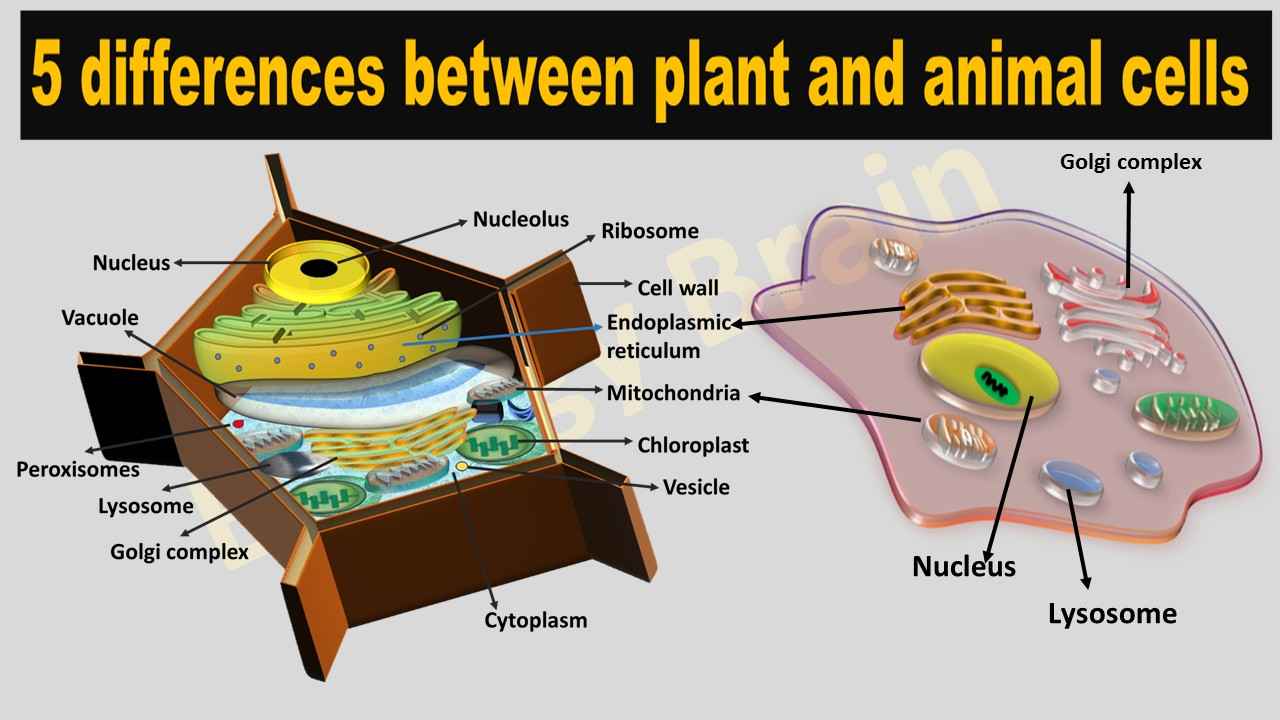Both plants and animals are eukaryotic organisms that contain membrane-bound organelles such as endoplasmic reticulum, Golgi complex, mitochondria, and nucleus in their cells. However, they have their uniqueness in their cell structure, composition, and function.
Mainly, 5 differences between plant and animal cells can be noticed with their mode of nutrition and presence or absence of cell wall, centrosomes, plastids, and cilia.
5 differences between plant and animal cells
Plant cell | Animal cell |
| Mode of nutrition: Plants are autotrophs (auto “self” and trophe “nutrition”) which means they make food themselves by the process called photosynthesis using light, carbon dioxide, and water. The synthesized food will be stored as carbohydrate molecules especially in the form of starch and glucose. | Mode of nutrition: Animals are heterotrophs (héteros “other” and trophe “nutrition”) or consumers, which means they cannot produce their food, instead they consume producers (plants) or other consumers (animals). |
| Cell wall: Plant cell contains cell wall. Plants are sessile organisms, which means they cannot move to another place, hence they need a rigid body that is felicitated by a rigid cell wall. | Cell wall: Since animals are motile organisms, they have no cell wall. |
| Centrosomes: These are major elements responsible for cell division. However, plant cells lack centrosomes; hence, plants cannot use centrosomes for cell division, instead, they use cell plate between the two daughter cells for the cells to separate. | Centrosomes: Animal cells possess centrosomes and use them in cell division. |
| Plastids: Plastids are plant-specific membrane-bound organelles that play a crucial role in the production of carbon molecules through photosynthesis. Especially, the chloroplasts carry out the food production process in autotrophs (plants). | Plastids: As animals are heterotrophs, they do not require plastids to produce their food. |
| Cilium: Plant cell lack cilium or cilia (plural) | Cilia: Animal cells contain cilia. In general, the cilium is a hair-like organelle found on the surface of eukaryotic cells and plays a crucial role in cell movement. |











